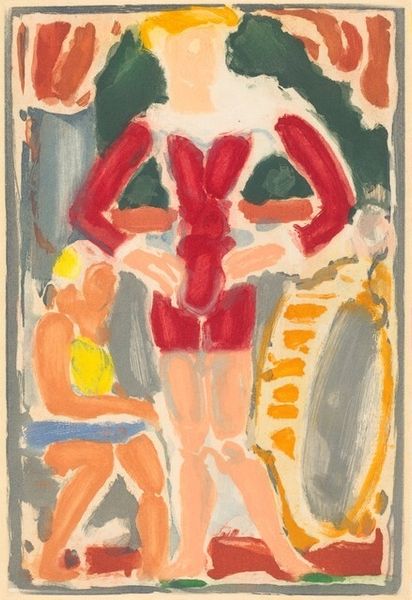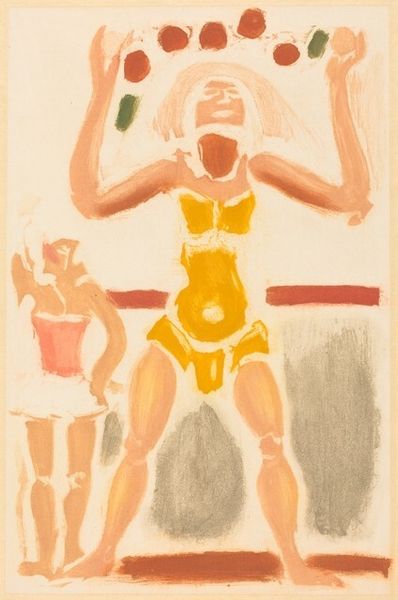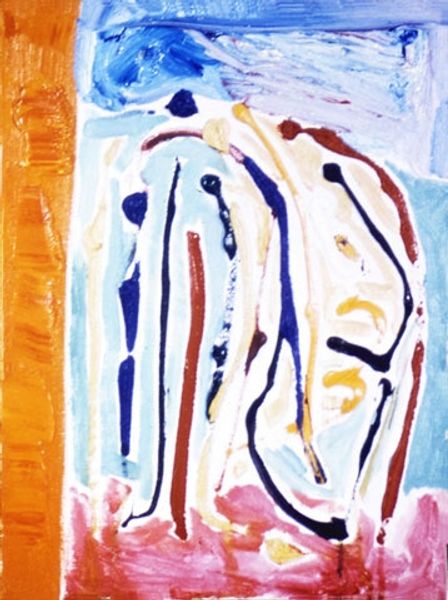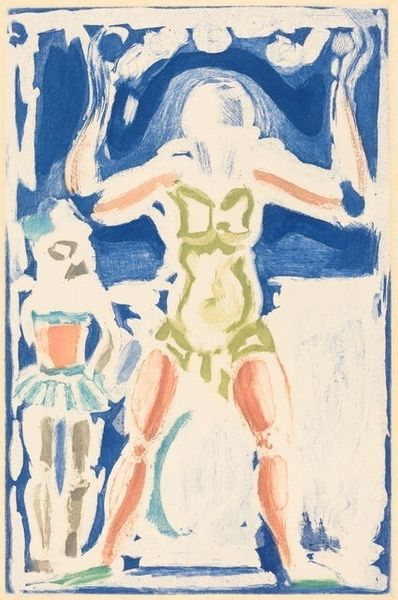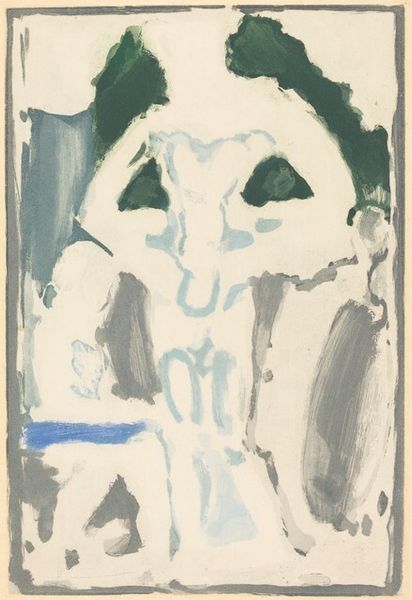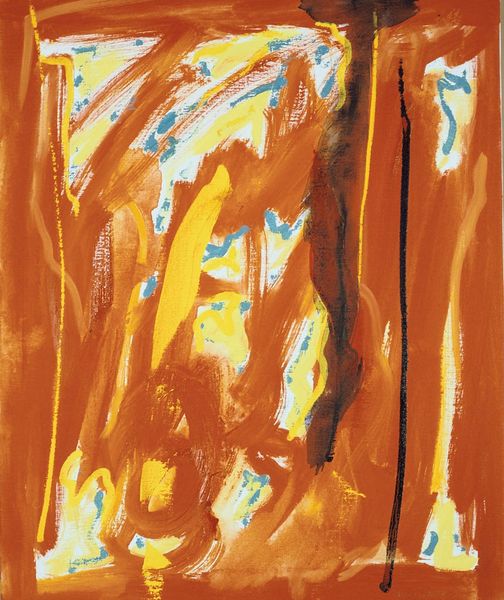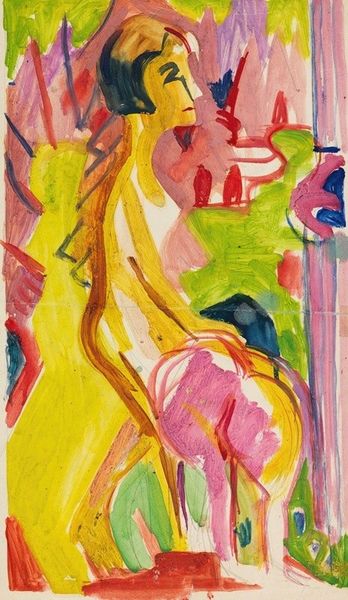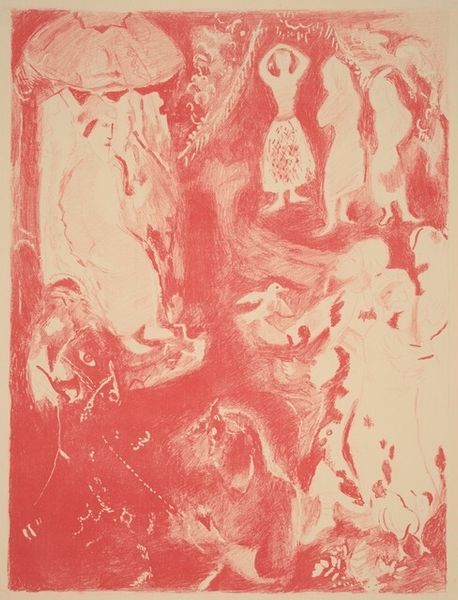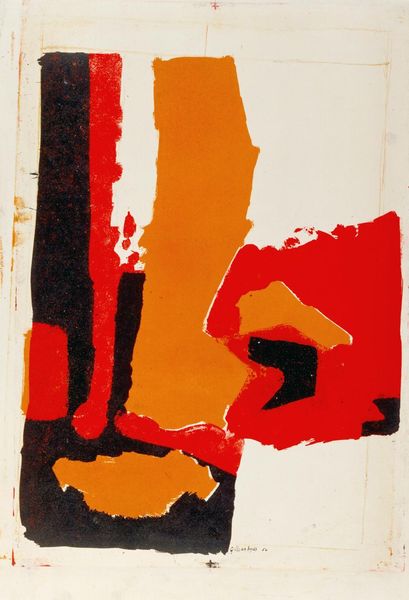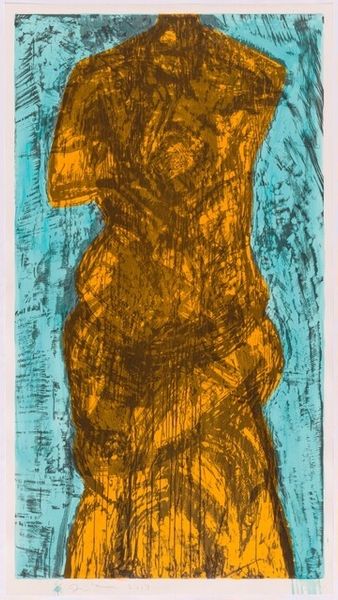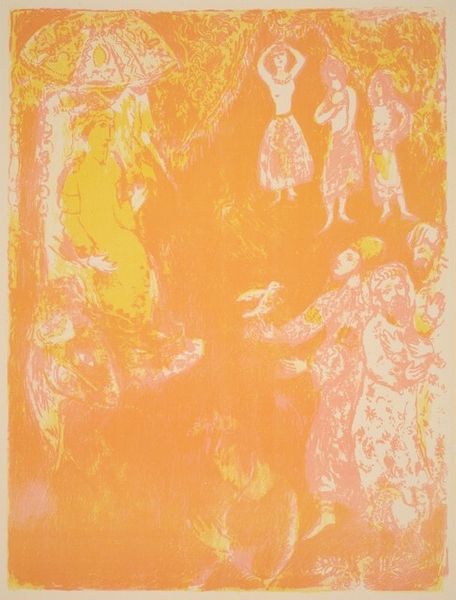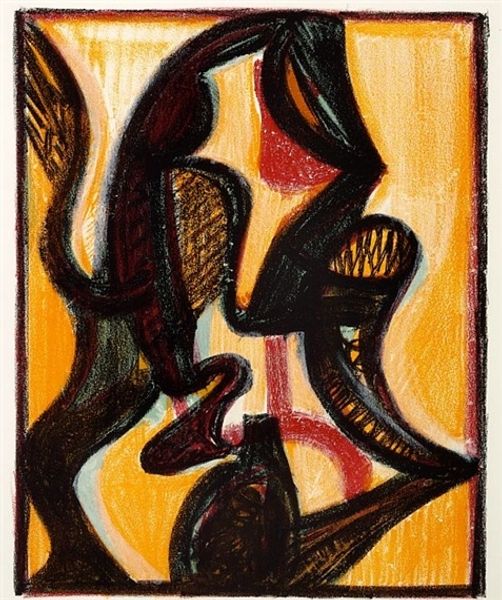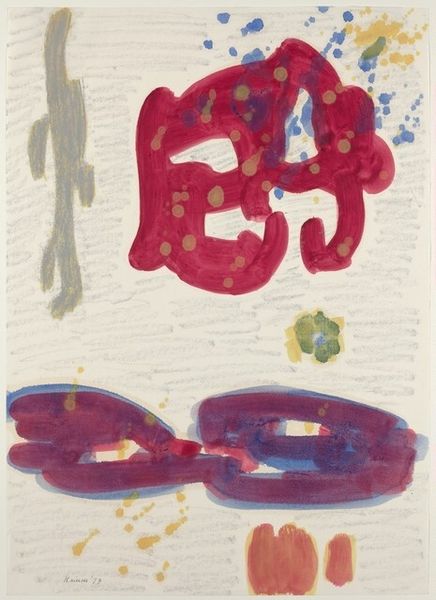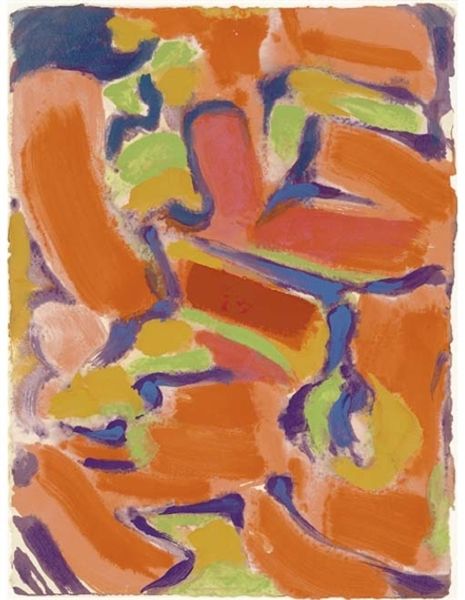
Copyright: National Gallery of Art: CC0 1.0
Editor: So, this is Georges Rouault’s “Master Arthur,” painted in 1934, employing acrylic paint – or maybe even printmaking techniques? It’s… striking, to say the least. I’m finding it difficult to piece together the visual elements, and their emotional charge feels ambiguous. How do you interpret this work? Curator: Ambiguity is key here. Look at how Rouault uses color. Those strong reds and yellows juxtaposed against muted skin tones – it's emotionally potent. Remember that colors carry inherited meanings: red often speaks to passion, sacrifice, or danger, while yellow is complex, carrying associations from optimism to betrayal, based on context and cultural experiences. Editor: So the fragmented figures contribute to this feeling? Curator: Exactly. What figures do you perceive in it? Editor: There’s the titular "Master Arthur", another person to the side in yellow, maybe by an oval structure. It's definitely not a traditional portrait. The bodies seem disjointed, abstract...almost like fractured memories or projections of ideas, emotions perhaps. Curator: And notice how the thick, almost crude lines – the *cloisonnisme* style – separate the colors. Like stained glass, they carry heavy symbolism, the boundaries within our minds… almost like our brains create these walls or barriers within our psyche, isolating us and fragmenting perception. Consider also Rouault's background and the historical context of Expressionism: are we viewing reflections of societal turmoil or personal angst within such symbols, even religious anxiety and philosophical questions of that period? What feelings about them surface in you? Editor: That connection between technique and meaning… it's not just visual, it becomes psychological! Now, looking back, the broken bodies hint at internal conflict and a very vulnerable state. Thanks, I had not approached the painting this way! Curator: Indeed! Art serves as a conduit, where cultural memory meets emotional depths. We build up this collective reservoir of shared cultural associations with things, from personal or social memories and feelings from them to build the present day as it grows.
Comments
No comments
Be the first to comment and join the conversation on the ultimate creative platform.
